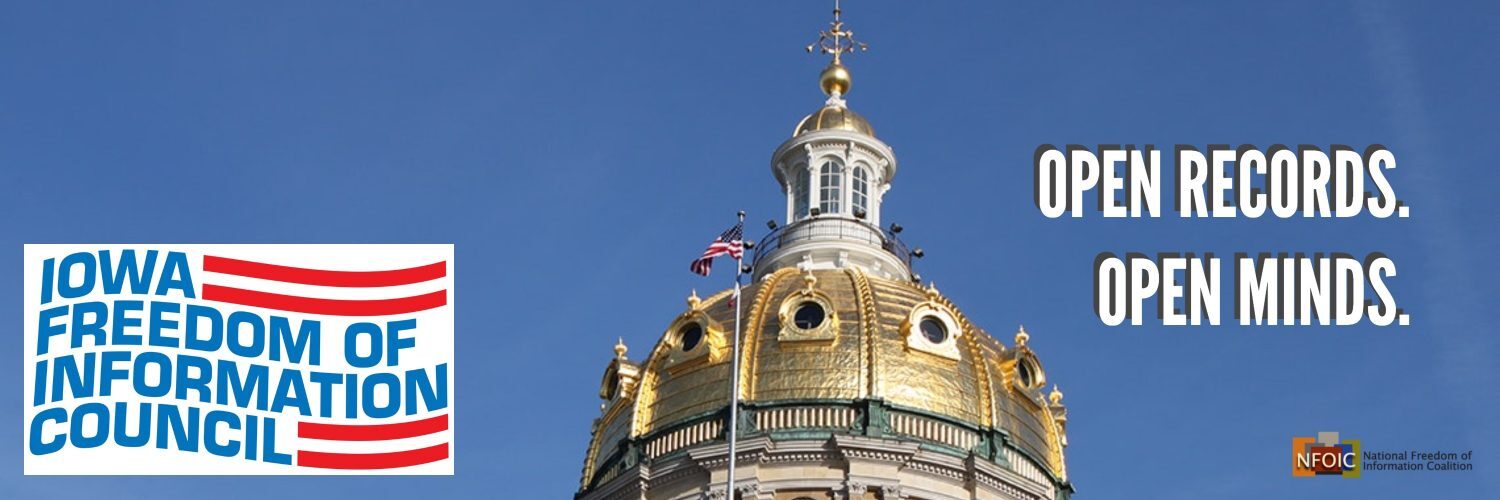This column first appeared in the Bloomfield Democrat on Dec. 16, 2015.
By Randy Evans
In the first half of the 20th Century, Edward Allen was a professor of mathematics at Iowa State University. Besides his academic work, Allen was an activist on behalf of civil liberties.
Allen was troubled by the way government officials used criminal laws to go after labor union members who were on strike or people who spoke out against government actions. In 1935, he founded an organization of like-minded people and called it the Iowa Civil Liberties Union.
The organization was the fifth affiliate of the American Civil Liberties Union and was the first to be formed outside one of the nation’s major metropolitan areas.
There’s much irony, therefore, that Iowa State University has named one of two designated “free speech zones” on campus after Allen. The Edward S. Allen Area of Free Debate is where ISU students, employees and the public are supposed to go to express their views on any topic.
Those who wonder how the largest public university in Iowa can control where people speak out are asking an excellent question. But the ISU policy on what officials call “public forum areas” is part of a movement at many U.S. colleges to limit the free expression of ideas.
A Yale University lecturer was forced to resign this fall after she challenged a notice from Yale’s Intercultural Affairs Committee about Halloween costumes. The directive said it would be insensitive for students to wear costumes that symbolized “cultural appropriation” by including such things as feathered headdresses, turbans, war paint, blackface or red face, or that made fun of people.
Lecturer Erika Christakis urged students to decide for themselves what costumes they wanted to wear to parties — even if their costumes were “obnoxious,” “inappropriate,” “provocative” or “offensive.” If a student doesn’t like another student’s costume, look away or tell the student you are offended, she told students.
But some students found her advice to be offensive. Yale President Peter Salovey defended what he called the students’ “great distress.” He said Yale supported better diversity through “greater inclusion, healing, mutual respect, and understanding.”
The turmoil on campuses over free speech isn’t confined to Yale or Iowa State.
We saw this at the University of Missouri and Amherst College this fall. We saw it last year at Rutgers University and the University of California-Berkeley, where students pressured former Secretary of State Condoleezza Rice and commentator Bill Maher to be dropped as commencement speakers. We saw this at the University of Iowa, where an artist’s sculpture of a Ku Klux Klan member clad in a robe of newspaper clippings about racial violence was removed at the direction of administrators after some students protested its presence.
At Amherst, a group of students demanded that officials discipline students who put up posters that said, “All Lives Matter” and “In memoriam of the true victim of the Missouri protests: free speech, 1776-2015.”
Somewhere along the line, students and administrators forgot, or never learned, that the free speech guarantee in the U.S. Constitution gives people the right to say what is on their minds, even if it offends other people. There’s no better example than Republican presidential candidate Donald Trump, who has stepped on more toes than a beginning ballroom dancer.
While students say they like diversity on campus, it really seems that they want views and speakers they agree with, rather than speakers with views that challenge students to rethink their own opinions. And administrators prefer to focus on their schools’ diversity by talking about race, gender or sexual orientation, rather than diversity of ideas.
UI political science professor Tim Hagle told reporters after the KKK art controversy, “The First Amendment protects offensive and insensitive speech. It’s not enough to say, ‘We respect freedom of speech.’ ”
Back to Iowa State University and its free speech zones:
There are but two designated “areas of free debate” on the 2,000-acre Ames campus. People can use one of those areas for what the school calls “expressive activities.”
But people who want to use other areas must notify the university’s event management office at least three hours in advance. Approval isn’t necessary if the event meets certain criteria about the hours of the event and the proximity to classroom buildings.
Events that don’t meet those criteria need to be submitted for approval at least four days in advance. Approval is based on whether the university thinks the event is appropriate for the location.
The Iowa Legislature established the Ames school in 1858, three years after Bloomfield was incorporated. Somehow for all of its 160 years of existence, Bloomfield has managed to get along quite nicely without any free speech zones. Of course, that’s how Edward Allen — and our Founding Fathers — envisioned free speech should work.
